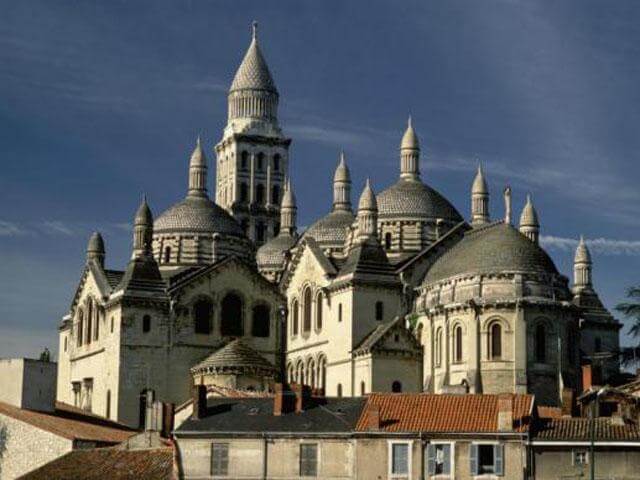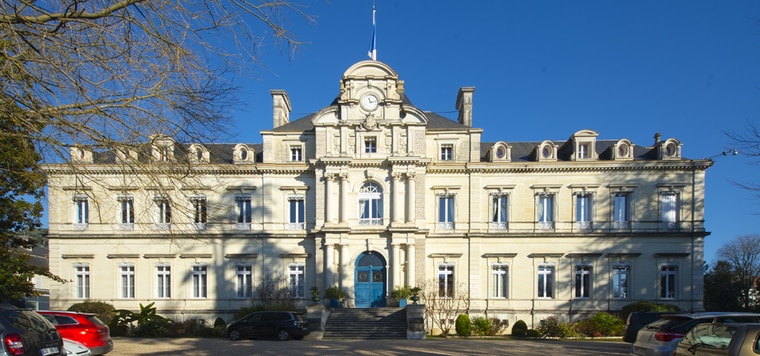Périgord comes in 4 colors: black, purple, white and green. Historically, we find traces of these names in old books. Black Périgord refers to the forest (dark), and sometimes also to truffles. White Périgord refers to the chalk and limestone soils that appear in the landscape, while green Périgord is characterized by its meadows and, more recently, purple Périgord has been named in reference to wine, as it is home to numerous vineyards.
Today, Périgord and Dordogne are synonymous and refer to the same territory. During the French Revolution, the National Assembly decided to create départements to simplify the administrative organization of France. The criteria for department names were geographic or hydrographic, and Périgord was named after its main river: the Dordogne.
Périgord refers to the Dordogne department, located in southwestern France in the New Aquitaine region. It is bordered by the ramparts of the Massif Central to the north, the Causses du Quercy to the east, the orchards of the Lot et Garonne to the south and the gravel of the Gironde to the west.
Dordogne is synonymous with Périgord, located in southwestern France in the New Aquitaine region. The Dordogne is bordered by the ramparts of the Massif Central to the north, the Causses du Quercy to the east, the orchards of the Lot et Garonne to the south and the gravel of the Gironde to the west.
Périgord Noir is located in the south-east of the Dordogne department: Sarlat is the capital, and you'll also find the following villages: Montignac, Les Eyzies, Thenon, Terrasson, Belvès, Domme, Le Bugue, Saint Cyprien, Villefranche du Périgord, Hautefort. The name refers to the dense foliage and dark undergrowth. For convenience, black is also associated with truffles, but the presence of this precious mushroom is not the origin of the appellation.
Périgord noir is made up of the Vézère and Dordogne valleys.
The Dordogne, Vézère and Céou rivers irrigate this region
Périgord Vert corresponds to the northern part of the Dordogne, a very hilly area covered with meadows and, to a lesser extent, oak forests. Nontron, Brantôme, Ribérac, Lanouaille, Thiviers and Saint Pardoux la rivière are among the communes of the Périgord Vert. It is currently a tourist designation covering the Nontron region and the Dronne valley. The Côle, Auvézère, Dronne and Belle rivers flow through this part of the Dordogne.
Périgord Blanc corresponds to the center of the Dordogne department, and takes its name from the white color of the limestone rocks in the landscape. Périgueux is the capital of the Périgord Blanc region, as are the villages of Vergt, Mussidan, Neuvic, Saint Astier, Montpon ménestérol and Sorges. White refers to the stones of monuments and homes, the white stones that surface in crops and lime quarries (Saint Astier).
Purple Périgord located in the south-west of the department, takes its name from the purple foliage of the vines in autumn and the color of the wine. It's a recent appellation that complements the 3 other colors of the department.
Bergerac is its capital. It's also the land of the Bastides: Beaumont du Périgord, Issigeac, Monpazier, Lalinde and Eymet...
Périgordins are the inhabitants of Périgord, i.e. the Dordogne. The term périgourdins is reserved for the inhabitants of Périgueux. But in common usage, the inhabitants of Dordogne are called Périgourdins (and not Périgordins), which is strange...
The inhabitants of the Dordogne are called Périgordins, Dordognots or Dordognais, but no one in the Dordogne uses these terms. The inhabitants of the Dordogne call themselves Périgourdins (a term normally reserved for the inhabitants of Périgueux).
The Dordogne is a 483 km-long river that originates in the Puy de Dome region. Two small streams, the Dore and the Dogne, join to form the Dordogne. Yet the etymology of the word Dordogne does not stem from this union. Its name comes from "Durãnius", meaning torrent or stream (like the Durance), which evolved into Dordonia (9th century) and then Dordogne.
The Dordogne is one of the cleanest rivers in France. In summer, its temperature is very mild and it's rather calm. Of course, all safety instructions for swimming must be observed.
Sarlat is located in the New Aquitaine region, in the south-east of the Dordogne département, in an area known as the Périgord Noir.
Distances from Sarlat
In the Dordogne: Périgueux : 70 Km - Bergerac : 80 Km
In France: Cahors : 60 Km - Brive : 55 Km - Limoges : 130 Km - Toulouse : 160 Km - Bordeaux : 180 Km - Lyon : 400 Km - Paris : 530 Km
Road links
A20 freeway: Paris/Souillac (Sarlat 25 km away) - A20 freeway: Toulouse/Cahors, then Gourdon, Sarlat. - A10 freeway: Paris/Poitiers, then Angoulême, Périgueux, Sarlat.Bordeaux/Sarlat via Bergerac. - A89 freeway: Lyon/Clermont Ferrand Sarlat - Bordeaux/Périgueux Sarlat
Rail links
Sarlat/Bordeaux
Paris/Souillac/Sarlat: Paris/Toulouse line - regular bus service to Souillac/Sarlat (25 km). - Paris/Libourne/Sarlat: connection with TGV, regular services.
Sarlat/Périgueux via Le Buisson
Overhead line:
You can arrive via Bergerac, Brive or Bassillac (Périgueux) airports.
We tend to confuse these 2 chasms because their names are so similar. The Gouffre de Proumeyssac is located at Audrix in the Dordogne (Périgord Noir) and is a small but interesting chasm.
The Gouffre de Padirac is located in the Quercy region of the Lot department. It's France's largest and most visited chasm, and a must-see if you live nearby.
Discover this is the Proumeyssac chasm
Discover Padirac chasm
The Dordogne covers an area of around 9000km², making it the third-largest département in mainland France. (France's largest department is French Guiana, a must-see). At its longest, from north to south, it covers 126 kms and its greatest width is from west to east: 116 kms. And as an added bonus, a density of 43 inhabitants per km².
Périgueux is the prefecture of the Dordogne, and there are also three sub-prefectures: Bergerac , Sarlat la Caneda and Nontron.
Please note that you may not be able to carry out all your administrative formalities in the sub-prefectures. For example, you will have to go to Périgueux to renew your driving license.







Can anyone tell me the ethymological origin of the name Eyzies?
It's important to finish my book on our Cro-Magnon friends! Même di cette appellation ne plaît pas aux scienteux! Many thanks to all of you!
Hello
We would like to build or renovate a house in the Dordogne, in the Perigord region. We'll be there from April to October, so we're not afraid of winter weather and desertion.
On the other hand, we've seen a lot of building plots in the Perigord Vert, which we know less about.
We also have beautiful things to offer in Brantome, not so far from Perigueux, but one wonders if it's important to be close to a "big" city as there's no TGV or air access.
FInalemeen tle perigord Vert is closer to Poitiers or Sainte Croix de Mareuil.
Thanks to all the connoisseurs for their feedback, which will enable us to finalize our construction project.
Muchas gracias por la hermosa página.
Querría saber el significado del sufijo francés antiguo "-ac", utilizado en nombres de muchos lugares: Riberac, Verteillac, Bergerac, etc. etc.
Muchas gracias.
Hello, thank you for all this information
We plan to visit your beautiful region in late October, early November.
What was the climate like at the time? Are the castles and gardens open to the public?
What are the precautions to take, the things to consider to make the most of this holiday?
Thank you for your reply.
Hello
At the end of October/beginning of November, autumn and its beautiful colors take hold in Périgord. Daytime temperatures generally hover around 20°C, and nights are relatively cool, hovering around 10°C. The weather is often fine, but there's also some precipitation, so mushroom picking is possible. The châteaux are still open, but some of them close after the All Saints' vacation. So there's nothing to stop you enjoying your stay.